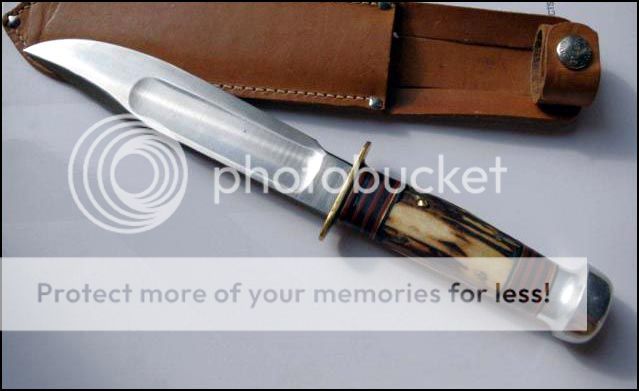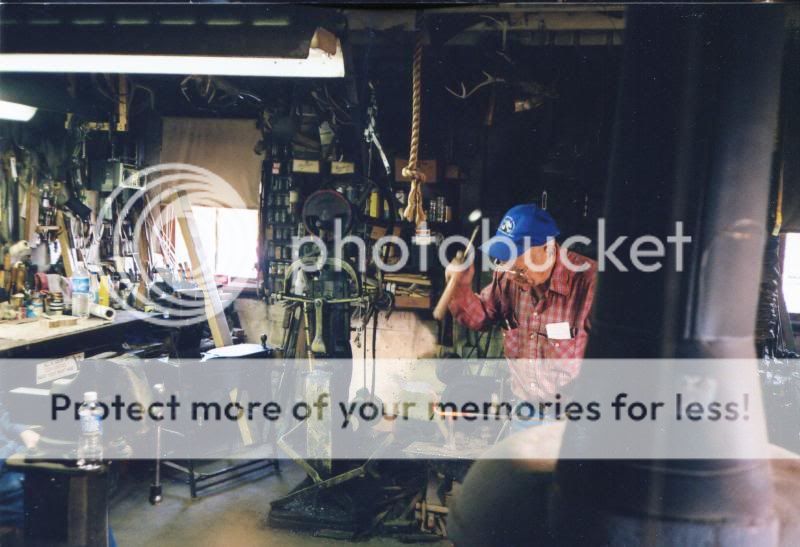Clem Kadiddlehopper
knife guy
- Joined
- Sep 4, 2012
- Messages
- 7,114
Custom Knife History
From the beginning of man there have been some type of cutting tools that they made and used. These tools were made with all kinds of material such as bone, wood, stone, flint, brass and eventually steel. All these were very crude looking, and all made by hand to help with survival at that time. As time passed by they learned how to make them better and better. So now here we are thousands of years later were a person can have a knife custom made. They are made from some of the finest steels ever developed. And from some of the best materials available to make the very best knives possible by some of the best skilled craftsmen in the world.
I’ve started this thread hopefully (with your help) to pass along some of the history of the custom knives made and being made. There is a ton of history in knives them selves. Such as the bowie knife history, knife designs & types made over the years. But I would like this to be about Custom Knives and their history over the years. What designs, materials, and trends that have brought us to this point. Who were the knife makers that pushed the market in certain directions with their designs. Were did they come from? Why & how did they start making knives? Why did some do better then others? What are some of the old stories that happened around these knife shops that folks collecting custom knives now and in the future may like to know?
Anyone who has been around custom knives for a while will know the big names in the game. These for sure will be talked about here for good reason. But there are others that are not that well known that should be included here also. So with all of us adding a bit of what we know here? Maybe we can pass a long to future knife collectors some of the knowledge before it’s lost? So please if you have photos & stories or any knowledge you would like to pass a long? Please do so, this is your thread.
(Gus had started a thread called Memories and I had added a lot of old photo that I had saved from the web. I will probably add some of them here as we get going. Sorry for messing up that thread Gus, I did not mean to do that.)
Thanks for your help - I hope all knife enthusiasts will enjoy this thread for years to come.
So were should we begin?
From the beginning of man there have been some type of cutting tools that they made and used. These tools were made with all kinds of material such as bone, wood, stone, flint, brass and eventually steel. All these were very crude looking, and all made by hand to help with survival at that time. As time passed by they learned how to make them better and better. So now here we are thousands of years later were a person can have a knife custom made. They are made from some of the finest steels ever developed. And from some of the best materials available to make the very best knives possible by some of the best skilled craftsmen in the world.
I’ve started this thread hopefully (with your help) to pass along some of the history of the custom knives made and being made. There is a ton of history in knives them selves. Such as the bowie knife history, knife designs & types made over the years. But I would like this to be about Custom Knives and their history over the years. What designs, materials, and trends that have brought us to this point. Who were the knife makers that pushed the market in certain directions with their designs. Were did they come from? Why & how did they start making knives? Why did some do better then others? What are some of the old stories that happened around these knife shops that folks collecting custom knives now and in the future may like to know?
Anyone who has been around custom knives for a while will know the big names in the game. These for sure will be talked about here for good reason. But there are others that are not that well known that should be included here also. So with all of us adding a bit of what we know here? Maybe we can pass a long to future knife collectors some of the knowledge before it’s lost? So please if you have photos & stories or any knowledge you would like to pass a long? Please do so, this is your thread.
(Gus had started a thread called Memories and I had added a lot of old photo that I had saved from the web. I will probably add some of them here as we get going. Sorry for messing up that thread Gus, I did not mean to do that.)
Thanks for your help - I hope all knife enthusiasts will enjoy this thread for years to come.
So were should we begin?






































































